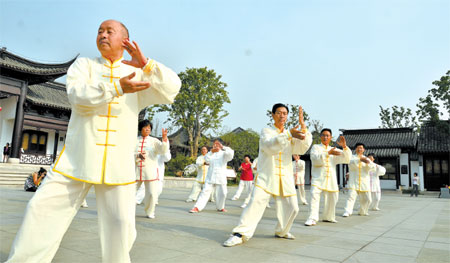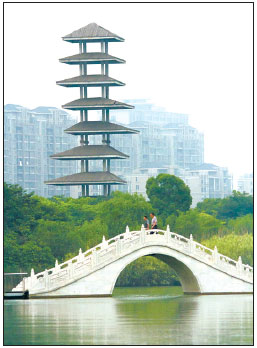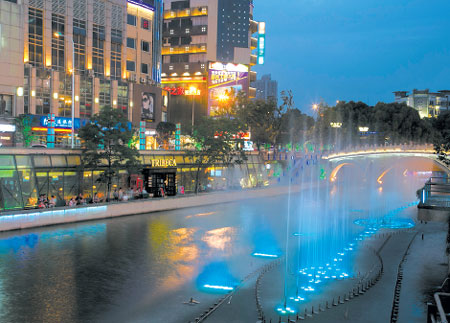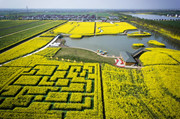Zhangjiagang Special:Creating a livable city boosts quality of life and local economy
( China Daily )
Updated: 2014-06-19
|
|||||||||
A group of people, wearing long, white silk clothes, practice tai chi while ancient Chinese music plays in the background as dawn breaks at Xiangshan Hill in Zhangjiagang.
The city, which is in Jiangsu province, is known as the "garden city" of China.
With a greenery rate of 39.6 percent, the area's natural environment is a popular place for local residents to go each day for their morning activities, which include tai chi, dancing and singing.
The local government focused on building Zhangjiagang into a livable city in recent years. A city official said the move was expected to "enhance the city's competitiveness by providing a great environment for people from both China and abroad to work and live."
Good quality of life would attract more overseas talents and start-up companies to settle in the city and drive urbanization, the official added.
Xiangshan Hill, which is the highest site in Zhangjiagang, lies in the west of the city and occupies a total area of 4.37 square kilometers.
As a national 4A park, it is an ideal place for locals to exercise and spend time with families and friends.
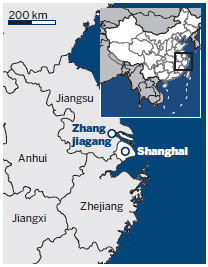
A retired worker from a local factory, surnamed Wang, said he went to the hill to sing Xi Opera, a southern style opera, with his former colleagues everyday.
"There are a variety of trees and flowers on the hill, and the air is fresh here," Wang said. "Many people like me come to the hill every day."
"I joined the singing group on the hill in the morning and it has become a highlight of my life in retirement," he added.
There are numerous other parks in Zhangjiagang city that offer great spaces for residents to jog, cycle, play sports and picnic.
Most of the parks are built on former construction sites.
The Jiyang Lake Ecological Park, in the south of Zhangjiagang, used to be the construction pit for the expressway built in 2000.
After the expressway was finished the government invited an US-based landscape design company to redesign the area into a lake park, which today occupies 4.41 square kilometers.
According to the local government, more than 70 percent of the park is covered by green belt and the central water area is 0.67 square kilometers.
A wetland area was created in the southwest side of the park and covers 248,000 square meters.
The wetland was divided into seven sections from west to east to include marsh wetland forests, a wetland cypress isle, scrubby trees, lowland wetland and swamps.
The park offers entertainment and tourism areas, which include an open-air theatre, music fountain, water entertainment zone and commercial areas.
"Many residents come to the lake park to take a walk after dinner and some families bring tents to spend weekends here as well," the official said.
Zhangjiagang Park was built on abandoned land in 2000.
The 151,000-square-meter park has artificial hills, ancient style architecture, lakes and squares, which were built according to the area's original landscape.
According to the local government, more than 6.2 billion yuan ($1.03 billion) was invested from 2006 to improve air and water quality and the management of the chemical industry.
In addition, the city's annual investment in environmental protection exceeded more than 3 percent of the local GDP.
Zhangjiagang won a series of awards during its road to becoming a livable city.
It was honored as the first Model City for Environmental Protection of China by the Chinese government and won the UN Habitat Scroll of Honor Award in 2008.
The local government said in the process of urban development the city found that a good ecological environment not only helped boost the local economy but was also critical for residents' happiness and their quality of life.
zhuanti@chinadaily.com.cn
|
A group of people, wearing long, white silk clothes, practice tai chi while ancient Chinese music plays in the background as dawn breaks at Xiangshan Hill in Zhangjiagang. Aung Htay Hlaing / Myanmar Time |
|
A glance at Jiyang Lake Park Popov Maxim / Tengrinews |
|
The downtown of Zhangjiagang. Rudolf A. Portillo / Brunei Time |
(China Daily 06/19/2014 page15)

